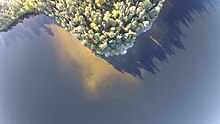
An algal bloom or algae bloom is a rapid increase or accumulation in the population of algae in freshwater or marine water systems. It is often recognized by the discoloration in the water from the algae's pigments. The term algae encompasses many types of aquatic photosynthetic organisms, both macroscopic multicellular organisms like seaweed and microscopic unicellular organisms like cyanobacteria. Algal bloom commonly refers to the rapid growth of microscopic unicellular algae, not macroscopic algae. An example of a macroscopic algal bloom is a kelp forest.
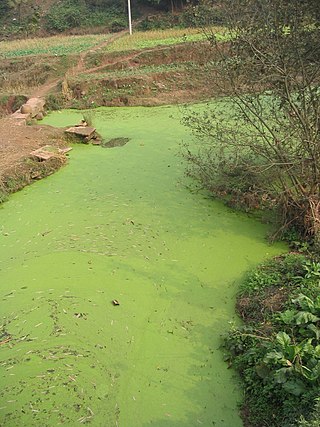
Eutrophication is a general term describing a process in which nutrients accumulate in a body of water, resulting in an increased growth of microorganisms that may deplete the water of oxygen. Although eutrophication is a natural process, manmade or cultural eutrophication is far more common and is a rapid process caused by a variety of polluting inputs including poorly treated sewage, industrial wastewater, and fertilizer runoff. Such nutrient pollution usually causes algal blooms and bacterial growth, resulting in the depletion of dissolved oxygen in water and causing substantial environmental degradation.

Limnology is the study of inland aquatic ecosystems. The study of limnology includes aspects of the biological, chemical, physical, and geological characteristics of fresh and saline, natural and man-made bodies of water. This includes the study of lakes, reservoirs, ponds, rivers, springs, streams, wetlands, and groundwater. Water systems are often categorized as either running (lotic) or standing (lentic).

Dead zones are hypoxic (low-oxygen) areas in the world's oceans and large lakes. Hypoxia occurs when dissolved oxygen (DO) concentration falls to or below 2 mg of O2/liter. When a body of water experiences hypoxic conditions, aquatic flora and fauna begin to change behavior in order to reach sections of water with higher oxygen levels. Once DO declines below 0.5 ml O2/liter in a body of water, mass mortality occurs. With such a low concentration of DO, these bodies of water fail to support the aquatic life living there. Historically, many of these sites were naturally occurring. However, in the 1970s, oceanographers began noting increased instances and expanses of dead zones. These occur near inhabited coastlines, where aquatic life is most concentrated.
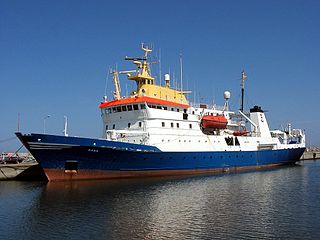
Fisheries science is the academic discipline of managing and understanding fisheries. It is a multidisciplinary science, which draws on the disciplines of limnology, oceanography, freshwater biology, marine biology, meteorology, conservation, ecology, population dynamics, economics, statistics, decision analysis, management, and many others in an attempt to provide an integrated picture of fisheries. In some cases new disciplines have emerged, as in the case of bioeconomics and fisheries law. Because fisheries science is such an all-encompassing field, fisheries scientists often use methods from a broad array of academic disciplines. Over the most recent several decades, there have been declines in fish stocks (populations) in many regions along with increasing concern about the impact of intensive fishing on marine and freshwater biodiversity.

Hydrobiology is the science of life and life processes in water. Much of modern hydrobiology can be viewed as a sub-discipline of ecology but the sphere of hydrobiology includes taxonomy, economic and industrial biology, morphology, and physiology. The one distinguishing aspect is that all fields relate to aquatic organisms. Most work is related to limnology and can be divided into lotic system ecology and lentic system ecology.
Dilbit is a bitumen diluted with one or more lighter petroleum products, typically natural-gas condensates such as naphtha. Diluting bitumen makes it much easier to transport, for example in pipelines. Per the Alberta Oil Sands Bitumen Valuation Methodology, "Dilbit Blends" means "Blends made from heavy crudes and/or bitumens and a diluent, usually natural-gas condensate, for the purpose of meeting pipeline viscosity and density specifications, where the density of the diluent included in the blend is less than 800 kg/m3." If the diluent density is greater than or equal to 800 kg/m3, the diluent is typically synthetic crude and accordingly the blend is called synbit.

The Trophic State Index (TSI) is a classification system designed to rate water bodies based on the amount of biological productivity they sustain. Although the term "trophic index" is commonly applied to lakes, any surface water body may be indexed.

A wild fishery is a natural body of water with a sizeable free-ranging fish or other aquatic animal population that can be harvested for its commercial value. Wild fisheries can be marine (saltwater) or lacustrine/riverine (freshwater), and rely heavily on the carrying capacity of the local aquatic ecosystem.
David William Schindler,, was an American/Canadian limnologist. He held the Killam Memorial Chair and was Professor of Ecology in the Department of Biological Sciences at the University of Alberta in Edmonton, Alberta. He was notable for "innovative large-scale experiments" on whole lakes at the Experimental Lakes Area (ELA) which proved that "phosphorus controls the eutrophication in temperate lakes leading to the banning of phosphates in detergents. He was also known for his research on acid rain. In 1989, Schindler moved from the ELA to continue his research at the University of Alberta in Edmonton, with studies into fresh water shortages and the effects of climate disruption on Canada's alpine and northern boreal ecosystems. Schindler's research had earned him numerous national and international awards, including the Gerhard Herzberg Gold Medal, the First Stockholm Water Prize (1991) the Volvo Environment Prize (1998), and the Tyler Prize for Environmental Achievement (2006).

Canadian aquatic invasive species are all forms of life that traditionally has not been native to Canada's waterways. In Eastern Canada, non-native plant and animal species are a concern to biologists. Bringing non-native species such as invasive fishes into Canada can damage the environment and ecosystem by repressing native species due to food competition or preying. Invasive fishes enter the fresh waters of Canada in several ways including drifting, deliberate introduction, accidental release, experimental purposes and, most commonly, through the attachment on international boat hulls. Invasive species are the second biggest threat to fish and other marine life in Canada behind loss of habitat and degradation. The threat to native species is primarily caused by impacts on the food web; however, invasive species also bring dangerous pathogens and physically interfere with existing aquatic life. Invasive species include sea lampreys, zebra mussels, smallmouth bass, European green crab, vase tunicate, and sea squirts.

Stephen Russell Carpenter is an American lake ecologist who focuses on lake eutrophication which is the over-enrichment of lake ecosystems leading to toxic blooms of micro-organisms and fish kills.
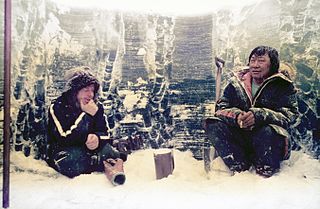
Saqvaqjuac was a 465 m2 Arctic research camp located on the north side of Chesterfield Inlet, Kivalliq Region, Nunavut, Canada, 35 kilometres (22 mi) north-northwest of the hamlet of Igluligaarjuk. It was opened in 1977, operated every year until 1982, and last used in 1988. The name is attributed to the fast-moving water connecting the inlet with Hudson Bay.

The International Institute for Sustainable Development (IISD) is an independent think tank founded in 1990 working to shape and inform international policy on sustainable development governance. The institute has three offices in Canada - Winnipeg, Ottawa, and Toronto, and one office in Geneva, Switzerland. It has over 150 staff and associates working in over 30 countries.
Jack Vallentyne was a Canadian biochemist and the 2001 recipient of the A.C. Redfield Lifetime Achievement Award.

Kinwamakwad Lake, also known as Long Lake, is a seepage at the University of Notre Dame Environmental Research Center in Gogebic County, Michigan. The lake has been studied since the mid-1900s and used as an experimental lake for ecological studies.
Amina Pollard is an American limnologist and ecologist at the U.S. Environmental Protection Agency (EPA).
Diane Orihel is a freshwater ecologist. She is currently an Assistant Professor in Aquatic Ecotoxicology at Queen's University and Director of the QE3 Research Group.
Lake 226 is one lake in Canada's Experimental Lakes Area (ELA) in Ontario. The ELA is a freshwater and fisheries research facility that operated these experiments alongside Fisheries and Oceans Canada and Environment Canada. In 1968 this area in northwest Ontario was set aside for limnological research, aiming to study the watershed of the 58 small lakes in this area. The ELA projects began as a response to the claim that carbon was the limiting agent causing eutrophication of lakes rather than phosphorus, and that monitoring phosphorus in the water would be a waste of money. This claim was made by soap and detergent companies, as these products do not biodegrade and can cause buildup of phosphates in water supplies that lead to eutrophication. The theory that carbon was the limiting agent was quickly debunked by the ELA Lake 227 experiment that began in 1969, which found that carbon could be drawn from the atmosphere to remain proportional to the input of phosphorus in the water. Experimental Lake 226 was then created to test phosphorus' impact on eutrophication by itself.
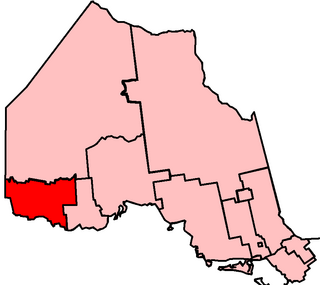
Lake 227 is one of 58 lakes located in the Experimental Lakes Area (ELA) in the Kenora District of Ontario, Canada. Lake 227 is one of only five lakes in the Experimental Lakes Area currently involved in long-term research projects, and is of particular note for its importance in long-term lake eutrophication studies. The relative absence of human activity and pollution makes Lake 227 ideal for limnological research, and the nature of the ELA makes it one of the few places in the world accessible for full lake experiments. At its deepest, Lake 227 is 10 meters (33 ft) deep, and the area of the lake is approximately 5 hectares. Funding and governmental permissions for access to Lake 227 have been unstable in recent years, as control of the ELA was handed off by the Canadian government to the International Institute for Sustainable Development (IISD).

